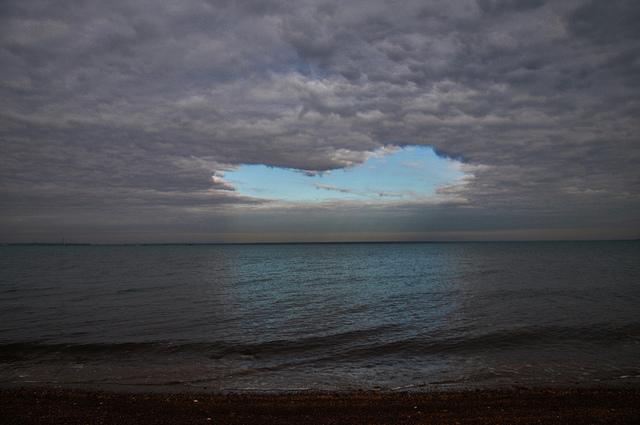What is Ozone Layer?
Ozone layer is a deep layer in earth’s atmosphere that contain ozone which is a naturally occurring molecule containing three oxygen atoms. These ozone molecules form a gaseous layer in the Earth’s upper atmosphere called stratosphere. This lower region of stratosphere containing relatively higher concentration of ozone is called Ozonosphere. The ozonosphere is found 15-35 km (9 to 22 miles) above the surface of the earth. The average concentration of ozone in the atmosphere is around 0.6 parts per million. The thickness of the ozone layer differs as per season and geography. The highest concentrations of ozone occur at altitudes from 26 to 28 km (16 to 17 miles) in the tropics and from 12 to 20 km (7 to 12 miles) towards the poles.
The ozone layer forms a thick layer in stratosphere, encircling the earth, that has large amount of ozone in it. It protects our planet i.e. Earth from the harmful radiations that comes from the sun. The ozone layer was discovered in 1913 by the French physicists Charles Fabry and Henri Buisson. The ozone layer has the capability to absorb almost 97-99% of the harmful ultraviolet radiations that sun emit and which can produce long term devastating effects on humans beings as well as plants and animals.

Why Ozone Layer is Necessary?
An essential property of ozone molecule is its ability to block solar radiations of wavelengths less than 290 nanometers from reaching Earth’s surface. In this process, it also absorbs ultraviolet radiations that are dangerous for most living beings. UV radiation could injure or kill life on Earth. Though the absorption of UV radiations warms the stratosphere but it is important for life to flourish on planet Earth. Research scientists have anticipated disruption of susceptible terrestrial and aquatic ecosystems due to depletion of ozone layer.
Ultraviolet radiation could destroy the organic matter. Plants and plankton cannot thrive, both acts as food for land and sea animals, respectively. For humans, excessive exposure to ultraviolet radiation leads to higher risks of cancer (especially skin cancer) and cataracts. It is calculated that every 1 percent decrease in ozone layer results in a 2-5 percent increase in the occurrence of skin cancer. Other ill-effects of the reduction of protective ozone layer include – increase in the incidence of cataracts, sunburns and suppression of the immune system.
Causes of Ozone Layer Depletion
During the last several decades, human activities have resulted in considerable reduction in the ozone layer of the atmosphere. Ozone depletion occurs when destruction of the stratospheric ozone is more than the production of the molecule. The scientists have observed reduction in stratospheric ozone since early 1970s. It is found to be more prominent in Polar Regions.
There are two regions in which the ozone layer has depleted.
- In the mid-latitude, for example, over Australia, ozone layer is thinned. This has led to an increase in the UV radiation reaching the earth. It is estimated that about 5-9% thickness of the ozone layer has decreased, increasing the risk of humans to over-exposure to UV radiation owing to outdoor lifestyle.
- In atmospheric regions over Antarctica, ozone layer is significantly thinned, especially in spring season. This has led to the formation of what is called ‘ozone hole’. Ozone holes refer to the regions of severely reduced ozone layers. Usually ozone holes form over the Poles during the onset of spring seasons. One of the largest such hole appears annually over Antarctica between September and November.

Natural causes of depletion of ozone layer: Ozone layer has been found to be affected by certain natural phenomena such as Sun-spots and stratospheric winds. But this has been found to cause not more than 1-2% depletion of the ozone layer and the effects are also thought to be only temporary. It is also believed that the major volcanic eruptions (mainly El Chichon in 1983 and and Mt. Pinatubo in 1991) has also contributed towards ozone depletion.
Man-made causes of depletion of ozone layer: The main cause for the depletion of ozone is determined as excessive release of chlorine and bromine from man-made compounds such as chlorofluorocarbons (CFCs). CFCs (chlorofluorocarbons), halons, CH3CCl3 (Methyl chloroform), CCl4 (Carbon tetrachloride), HCFCs (hydro-chlorofluorocarbons), hydrobromofluorocarbons and methyl bromide are found to have direct impact on the depletion of the ozone layer. These are categorized as ozone-depleting substances (ODS). Chlorofluorocarbons are released into the atmosphere due to:
- Cleaning Agents
- Coolants in refrigerators
- Packing material
- Air conditioning
- Aerosol spray cans etc.
The problem with the Ozone-Depleting Substances (ODS) is that they are not washed back in the form of rain on the earth and in-fact remain in the atmosphere for quite a long time. With so much stability, they are transported into the stratosphere. The emission of ODS account for roughly 90% of total depletion of ozone layer in stratosphere. These gases are carried to the stratosphere layer of atmosphere where ultraviolet radiations from the sun break them to release chlorine (from CFCs) and bromine (from methyl bromide and halons). The chlorine and bromine free radicals react with ozone molecule and destroy their molecular structure, thus depleting the ozone layer. One chlorine atom can break more than 1, 00,000 molecules of ozone. Bromine atom is believed to be 40 times more destructive than chlorine molecules.
Main Ozone Depleting Substances (OCD)
- Chlorofluorocarbons: Account for more than 80% of ozone depletion. Used in freezers, air cooling component, dry-cleaning agents, hospital sterilants.
- Methyl Chloroform: Used for vapour degreasing, some aerosols, cold cleaning, adhesives and chemical processing.
- Hydrochlorofluorocarbons: Substitutes for CFC’s but still play a vital role in ozone depletion.
- Halons
- Carbon Tetrachloride: Mainly used in fire extinguishers

